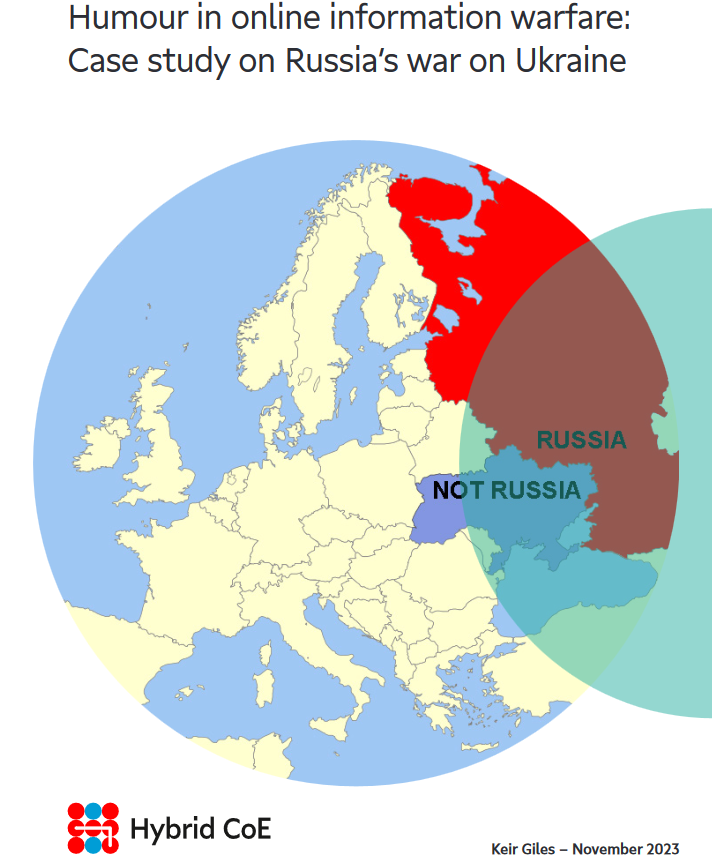
Social Media and the war of positions
Originally published: Midwestern Marx on February 19, 2024 by Carlos L. Garrido (more by Midwestern Marx) | (Posted Feb 22, 2024)
Historical Materialist View of Ideas
The collections of ideas we hold are historically conditioned by the mode of life we exist in. They reflect, in the realm of ideas, the limitations and possibilities of the mode of social life that dominates the era—of the forms of social intercourse which pervade our everyday lives. A feudal peasant cannot concern themselves with their social media profiles—with the likes their posts get, the shares it receives, and the subscribers or followers they have accumulated. These are, however, central concerns for most people today. We live in the era of profilicity as the dominant identity technology. As is evident, all the collections of ideas, concerns, aesthetic experiences, desires, beliefs, etc. which are tied to the profile-based mode of identity curation are dependent and grounded in the technological developments our era has achieved. In Marxist terms, these developments at the level of how we think (about ourselves and others) presuppose developments in the forces of production. Likewise, in most of the Western world, no youngsters would concern themselves with who their families will arrange them in marriage with. These preoccupations belong to an era that has passed—to a mode of social intercourse humanity has overcome.
This is a central component of historical materialism—the “law of development of human history” which Engels’s eulogy tells us Marx discovers. It is pithily formulated in the famous 1859 preface to Marx’s A Contribution to the Critique of Political Economy, where he writes that:
The totality of these relations of production constitutes the economic structure of society, the real foundation, on which arises a legal and political superstructure and to which correspond definite forms of social consciousness. The mode of production of material life conditions the general process of social, political and intellectual life. It is not the consciousness of men that determines their existence, but their social existence that determines their consciousness.1
Ideological Institutions and False Consciousness
The ideas that come to dominate a form of life do not exist in a transcendental realm. They are, instead, embodied materially through institutions and people. The influence these institutions hold varies. Their purpose, however, is the same: to sustain the consent of the masses (the subaltern) for the dominant order. They are tasked with ensuring the smooth reproduction of the current mode of life. In being the dominant institutions that pervade people’s everyday lives, they don’t simply get us to consent (which implies a conscious act of acceptance) but shape our spontaneous and common-sense worldviews to such an extent that we are unable to recognize, with the exception of those grand moments of rupture called ‘events’ in the history of philosophy, the conditioned and implanted character of our thoughts.
Like the slaves in Plato’s allegory of the cave, we are deeply unaware of the structures which contain the horizon of how we view reality. Plato could not have been more correct in emphasizing the painful character of the hypothetical cave’s escapee. It is not easy to have our notions of reality so easily overturned—to have our desires, beliefs, aesthetic experiences, etc. demolished. Like the escaped slave, who painfully needs to readjust their eyes, the overcoming of bourgeois ideology is a painful process—not a spontaneous and immediate ‘moment’. When our conditions of life are so systematically pervaded by lies and manipulations, all aimed at preventing us from rocking the boat, truth is painful. Truth is dangerous. The quest for truth has always had, as W. E. B. Dubois notes, “an element of danger and revolution, of dissatisfaction and discontent, [but] nevertheless, men strive to know.” From the killing of Socrates to the killing of King, class society has shown its proclivity to fight back viciously when threatened by the truth tellers. This was, once again, already prophetically described by Plato’s allegory.
Capitalism “is a social order that necessitates the general acceptance of an inverted understanding of itself… Reality [needs to be] turned on its head. But this is not, as Vanessa Wills notes, a problem of “epistemic hygiene”. The root of the ‘error’ is not in our minds, that is, in our reflection of the objective phenomena at hand. As I’ve argued previously,
it is much deeper than this; the inversion or ‘mistake’ is in the world itself… This world reflects itself through an upside-down appearance, and it must necessarily do so to continuously reproduce itself.
As Marx and Engels noted long ago,
If in all ideology men and their relations appear upside-down as in a camera obscura, this phenomenon arises just as much from their historical life-process as the inversion of objects on the retina does from their physical life-process.
Capitalist ideology is as capable of accepting truth as vampires are of consuming garlic. Truth, which almost always stands on the side of the masses, is its Achilles heel.
Shift in the Dominant Ideological Apparatuses
The institutions that disseminate and enculturate us into bourgeois ideology, however, don’t all play an equal role. Some are far more influential than others. In the medieval world the church was, without a doubt, the “dominant Ideological State Apparatus” (ISA). In the transition to the modern world, as Louis Althusser notes, “the Ideological State Apparatus which has been installed in the dominant position in mature capitalist social formations as a result of a violent political and ideological class struggle against the old dominant Ideological State Apparatus, is the educational ideological apparatus.” Schools would come to replace the church as the institutional cornerstone of bourgeois ideology—the most dominant force for the reproduction of bourgeois hegemony.
In some ways this is still the case. It is in the universities, for instance, where the ideas trafficked by popular culture are first developed in their utmost coherence. It is impossible to conceive of ‘wokeism’, today’s dominant form of liberal cultural intercourse, without the laying of its ideological foundations decades ago in the academy with the CIA manufactured compatible left. The ‘identity politics’ and ‘cancel culture’ so popularly debated in TV late-night roundtable discussions is far from being rooted in the communist tradition. Quite the opposite, that which today is called communism by the rightist pundits was explicitly produced to challenge Marxism. They were tasked with the role of being ‘radical recuperators,’ as Gabriel Rockhill calls them. Their job was (and is) to recuperate dissenting attitudes in the masses, especially young people, into the pro-imperialist anti-communist fold. As Michael Parenti correctly observed, these ABC (Anything But Class) theorists are tasked with developing “conceptual schemas that mute Marxism’s class analysis.”
However, in the last decade a new ideological terrain has obtained the dominant position within bourgeois hegemony: social media. The average American today spends around two to three hours on social media. While for a select few it might just be filled with innocent pictures of cute cats, for the vast majority of people social media plays a role akin to a technological polis—a place where the battle of ideas, or better yet, the dissemination of the dominant ideas, occurs.
While schools might still create the ideological foundation people are enculturated into, they often find themselves unable to comment on pressing issues of the day (with the exception, of course, of universities). Through social media, on the other hand, one encounters nonstop active manipulation on on-going events, with its scope and consistency far outweighing the influence university discussions on political affairs might have. Its impact, however, cannot simply be understood through quantitative metrics. Qualitatively, these social medias have revolutionized how we create our identities. As I have previously written,
We live in a time of profiles. Who we are, our identity, is deeply embedded in the curation of our profiles for general peers, those ‘users’ who validate our content through various interactive means (likes, shares, retweets, etc.). Our future posts are influenced by the reaction of previous posts. Those which tend to do good are repeated, those which don’t are not (often these are deleted outright). The dialectical interdependency of the individual and the social obtains a new form in the age of profilicity. Through these ‘social validation feedback loops’ (termed as such by Facebook president Sean Parker) we adjust our content to the reception of the general peer. Our identity is crafted with an eye to how we are ‘seen as being seen’. Second order observation becomes the norm; all judgement is subject to some degree of mediation by how the thing judged is seen by the general peer. These are some of the central insights of Hans Georg Moeller and Paul D’Ambrosio’s book, You and Your Profile: Identity After Authenticity. While it does have some blind spots (which I have hoped to bring light to in my work), it is without a doubt an essential text for understanding the dominant mode of identity technology in our day.
Social Media, Profilicity, and Ideological Manipulation

The potential for ideological manipulation brought about by the emergence of profilicity is, in some ways, far more potent than ever before. Following the 2019 coup in Bolivia, when 68 thousand bot accounts were used to make the imperialist narrative viral on twitter, I did a case study of how social media manipulation was used to legitimize the coup. I wrote:
The imperialist usage of bots and fake accounts engender an artificial general peer which functions as the condition for the possibility of imperialism’s control of a real one. This is because, at a certain nodal point, when the fake accounts and booster bots make something trend, the artificiality of the general peer’s reaction loses its artificial character, a real-people composed general peer picks up the baton from there and glazes the reaction with an ‘organic’ and ‘spontaneous’ vestment. In the age of profilicity, imperialism’s ability to control general peers is an indispensable tool for the attainment of its ends.
Regardless of how powerful the armed forces of an empire are, if it is not able to hegemonize the discourse on historical and contemporary events, its legitimacy—both nationally and internationally—will totter and make it susceptible to being overthrown. Firms like CLS Strategies, along with the complicit Silicon Valley social media monopolies, function as indispensable tools of capitalist-imperialism in the age of profilicity. At a time when identity is constructed through the curation of profiles mediated by second-order observation and general peer powered social validation feedback loops, the ability to manipulate general peers amounts to the unprecedented capacity of capital and the state to control what people think.
Additionally, the abstract character of this general peer conceals the manipulation itself. People construct their profile identities on the basis of how they would like to be seen as being seen, but the general peer doing the seeing has its eyes filtered through parental control imperialist glasses. How an event will be seen is determined by them—fake accounts will be made and boosted, dissenting accounts will be censored. This condition is depicted well in an old Soviet joke where a Russian and an American diplomat meet: the American asks “what are you here for,” the Russian replies “to learn about American propaganda techniques,” the American says, “what propaganda,” and the Russian replies “exactly.”
Censorship is an integral component working in conjunction with controlling what is seen through the usage of bots and other forms of boosting pro-establishment narratives. On all major social media platforms (yes, even on Elon Musk’s so-called free speech loving ‘X’), those accounts with substantial following that challenge the imperialist narrative on key issues are often outright banned.2 It is a very interestingly functioning tech-polis, where certain speakers are given a microphone to speak over others, others are muted or lowered to a virtually inaudible volume, while others are poof, disappeared completely.
The Institute I work for is not unacquainted with these censorship tactics. Seven of our tiktok accounts, the platform we received hundreds of thousands of followers and millions of views in, have been outright banned. As Edward Smith, Noah Khrachvik, and myself have previously noted,
Those who keep our people misinformed and ignorant, who have made their life’s purpose to attack truth-tellers, do so under the insidiously categorized guise of ‘combating misinformation.’ In their topsy-turvy invented reality, as Michael Parenti called it, they posit themselves as the champions of truth and free speech—a paradox as laughable as a vegan butcher…
[In the capitalist-imperialist mode of life], the freedom of speech and media is, therefore, actually the freedom of pro-capitalist speech and media. V. I. Lenin’s description of the media in capitalist society rings truer than ever in the 2020s, it is dominated by an “atmosphere of lies and deception in the name of the ‘freedom and equality’ of capital, equality of the starved and the overfed.” Any absolute statements about the freedom of the press must be followed by the Leninist question: “freedom of the press… for which class?” The capitalist media’s freedom to deceive the masses in their defense of the existing order is in contradiction to the masses’ interests in searching for and publicizing the truth.
The power to control the flow of ideas through these various means makes social media, as the dominant (or, at least, one of the dominant) ideological terrains of our day, virtually (pun intended) unmatched.
What Should Communists Do?

Some on the communist left often denigrate the role of social media work. ‘It’s just online, it has no bearing in reality,’ is a frequently expressed sentiment. Sometimes online ideological work is contrasted dis-favorably to protesting in the streets. Those in the streets are said to be actually doing something, while those who are online are not.
There is a rational kernel to this overall incorrect sentiment. It is true that the anti-social characteristics of the ‘identity socialists’ (as I call them in The Purity Fetish), those which spend all their days online starting twitter beefs and splits, calls for a spiritual rekindling with reality. They must ‘touch grass,’ as the expression goes.
But it is incorrect, on this basis, to denigrate online work as a whole, or to consider it ‘unreal’ in relationship to protests. Social media has, as I argued previously, developed itself into one of the most important ideological terrains of our day. It is a field where, as Gramsci would say, the war of position must be waged. No matter how much censorship, shadow banning, and manipulation occurs in this ideological field, it is still one of the most important places communists must participate in, waging the fight for the hearts and minds of the people. To ignore online work today is the equivalent of the French revolutionaries ignoring the institution of the church in their struggles against feudal absolutism. There is a key difference here, of course. Whereas the church in its heyday as the dominant ideological apparatus had to be fought from without, today social media, as the dominant ideological terrain, presents an internal field of struggle.
The war of position on social media, necessary though it might be, is, of course, not sufficient. If every twitter (excuse me, ‘X’) account followed the Midwestern Marx Institute, or any other organization on the communist left, that does not mean we are anywhere near to grabbing power. Real, in-life organizing cannot be avoided. Organizing in your workplaces and communities continues to be the most important thing one can do. It is that baseline work that Silicon Valley cannot ‘ban’ you from.
To wage a successful war of positions on social media requires mediums through which the people convinced to our side online can get involved in organizing in their communities. People must be ‘shuffled’ from simply agreeing with these ideas online to helping build organizations on the ground—to building working class, counterhegemonic institutions. The war of positions online must be conjoined with preparing the material and institutional foundations (i.e., parties and mass organizations) for the war of maneuver on the ground. Of course, just because these organizations would be ‘on the ground’ does not permit them to avoid the war of positions online.
Online War of Positions

What is the best way to wage the war of positions online? Is condemning everyone we don’t perfectly agree with as being whatever buzzword is popular the way to go? Clearly, this purity fetish mode of engagement, as I have argued before, leaves you surrounded only by those whom you already agree with. You reduce the pedagogic and recruiting tasks of the communist to someone who just sings to the choir. The battle of ideas, the war of positions, is fundamentally rooted in convincing. You cannot shame someone into agreeing with you. Talking down to working people with middle class patronizing attitudes is quite literally the opposite of what a successful war of positions looks like. You do not want the HR or DEI managerial departments to be the first thing someone thinks of when they speak to you. Quite the opposite.
We live under a moribund capitalist mode of life. That will be reflected in some of the spontaneous common-sense worldviews of the people this mode of life produces. We must be patient and flexible, not snappy and rigid. Our goal is to convince. To win the hearts and minds of people. The first thing which must be recognized, then, is that any ‘one-size-fits-all’ approach will fail. The starting point (i.e., the spontaneous worldview) people have differs—often more or less depending on certain regional, generational, and other differences. We must take these into account in all conversations.
But how should we start? What should we look for?
Well, Gramsci is here perhaps our most important teacher. If I want to get from A to B, I cannot simply teleport directly from A to B. Maybe the technology will come around one day that allows me to do so. For now, if I want to get from A to B, I need to find a point of contact, a road, or series of roads, that when connected in my passage allows me to arrive to my destination. The process of convincing is no different. If there is no point of contact, there can be no ‘winning over’ of someone to our side. The process of ‘winning over,’ like the process of getting from A to B, is a voyage, an undertaking, or, in short, a process. It does not happen instantaneously. It takes time.
In order for this process to begin, the point of contact must be found. Every spontaneous worldview the masses hold, deeply though they might be entrenched in various forms of bourgeois ideology, must nonetheless contain some rational kernels, ‘points of contact’ we can locate and start the voyage through. This is, for Gramsci, the essence of the war of positions. The task for communists, for the intellectual leadership of the working class movement, is finding, in the incoherent, ambiguous and spontaneous common-sense understandings and feelings of the masses, those rational kernels which can be disarticulated from their current worldview, and rearticulated towards Marxism. (See my chapter with J.P. Reed in the Elgars anthology on Gramsci for more).
Concretely, how does this look?
Well, for instance, in the U.S., the vast majority of people agree with the values of the Declaration of Independence. However, the values of life, liberty, pursuit of happiness, right to revolution, etc., have been unrealized for the mass of people under the dominant order. How can these egalitarian and emancipatory values be actualized under a system that produces, on the one hand, enormous wealth controlled by the few, and on the other, immense misery, debt, and oppression for the many? It is impossible. The universal ideals of the capitalist class have always been limited to their class—it has never been, from the start, anything more than the liberty of capital to exploit, and the sham ‘democracy’ of the capitalists to pick the political puppets that rule over the mass of people. This is why, as I have noted before,
In the face of growing inequalities and disparities, [in the 1820s and 30s] thinkers like Langdon Byllesby, Cornelius Blatchley, William Maclure, Thomas Skidmore and others, developed the Jeffersonian ideals of the Declaration of Independence into socialism, what they considered to be its practical and logical conclusion…
Throughout the ages, generations of American socialists have appealed to the Declaration of Independence to argue for socialism in a way that connects with the American people’s common sense. Leading historians and theoreticians of the American socialist tradition, thinkers like Staughton Lynd, Herbert Aptheker, W.E.B. Dubois, Eugene Debs, William Z. Foster and others, have elaborated on the subject, noting that regardless of the limitations encountered in the founding of the American experiment, it was a historically progressive event, whose spirit [can only] be carried forth today by socialists and communists.
So, here we have an example of a point of contact, a rational kernel, within our people’s common sense that can, and has historically been attempted to be, disarticulated from its bourgeois worldview origins, and rearticulated towards various socialist ones.
This is an example that has been used since the 1820s. But, how, in the age of profilicity, can we specifically do this through social media?
The essential elements remain the same. Find the individuals and institutions which play the most influential roles in shaping the common sense of various sections of the American masses. Within the worldviews they craft, find the rational kernels, the points of contact, you can establish a common ground with in discussions with working class viewers and readers of these ideologues. Always start the discussions with those points of contact—the ideas within their worldviews that can be dislocated from the worldview itself and used as a pathway for the new outlook. These rational kernels, of course, will differ with different sources.
For instance, some weeks ago I commented on a video from Andrew Tate, the man that was once the most viral person on the internet. This is someone which holds great ideological influence in our societies, specifically in the youth, which embodies the future of any revolutionary project. The video I comment on is one where Tate describes wage labor as a form of wage slavery. This is, for Marxists, clearly a point of contact, a ‘rational kernel’ within the Tateian worldview.

On the basis of this point of contact, I develop upon the often politically ambiguous history of the critique of wage slavery (for instance, while being a pillar of the socialist critique of capitalism, it was also a central component of the southern planter’s defense of chattel slavery, which they held was less evil and nefarious than wage slavery). Then, on the basis of the agreement with Tate of the slavish character of wage labor, I develop a critique of how this understanding is stifled by the Tateian worldview that had just formulated it. For Tate, the critique of wage slavery and the ‘matrix’ is not the basis for a collective emancipatory project. It is not rooted in a scientific, Marxist understanding of capitalist political economy. Hence, it is completely unaware of the internal laws of motion and contradictions which push the system towards its own destruction. He is unaware of the proletariat’s role as the gravedigger of the mode of life that produced them as a class.
Perhaps it is less of a question of ignorance on Tate’s part, and more one of an awareness of his class interests as a part of the (often mocked) new bourgeoisie. Either way, the result is the same, a stifled understanding of that phenomenon we have gravitated to as a ‘point of contact,’ and an individualized formulation of ‘escaping the matrix’ through getting rich yourself (a gig that through ‘Hustlers University’ he greatly profits from). Tate did not create this form of radical recuperation, and neither is he the only one that preaches it today. It is central to what Dubois called the American Assumption, the notion that through hard work one can lift themselves up and become rich. The difference is that in the 19th and 20th century this ideology occurred within the confines of a direct apologetics of U.S. capitalism. Post-1848 capitalism enters a distinctly reactionary stage, where even the veneer of progressivism that dominated the previous period is undone. In this post-1848 world, As Georg Lukács long ago noted, the defense of capitalism has to, in one form or another, present itself as an “indirect apologetics”. The superficial and culturalist critique of an often misidentified ‘capitalism’ (or matrix) has become an essential component for acquiescence to the system the critique takes as its object of critique.
What has occurred in the Tate commentary is precisely what Gramsci expects of us in the war of positions. We located the rational kernel and, on the basis of a superior understanding of the phenomenon, dislocated it from the Tateian worldview and towards a Marxist one. In the process we showed the role Tate plays as a radical recuperador for the ‘matrix’ he, in a very sophist-like manner, charges people to help ‘escape’.
After this video came out hordes of the liberals who think a hammer and sickle in their social media bios makes them communists came after us for ‘platforming’ Tate and lending credence to his ideas. This criticism, of course, is devoid of any semblance of the Marxist understanding of the war of positions. Neither the convincing of Tate himself, nor the sharing of his ideas, were the purpose of the video. What the video achieves (or at least attempts to), is quite literally the opposite—to be as efficient as possible in bringing people away from Tate and towards Marxism. One can argue that I failed in this enterprise, that a better job could have been done. But not deny, however, that this is the best route for combatting ideological opponents. It produces a double whammy, a removal of a follower to your opponent and an addition of a follower to your revolutionary project. This is the same double effect the black proletariat’s general strike during the Civil War had (removing the productive base of the Southern economy while adding soldiered, spies, and workers to the Northern forces), allowing them to win the battle for the forces of human liberation.
Tate is far from being the only individual we ought to be doing this with. At the Institute, every major pundit of the bourgeoisie, even those who present themselves as ‘anti-establishment’ and ‘anti-Deep state’, receive this treatment. We have commented in like manner on figures all across the American bourgeois political spectrum, from David Packman to Ben Shapiro to Jordan Peterson. In each case we attempt, again, to find the point of contact (rational kernels) that can be dislocated from these worldviews and rearticulated towards Marxism. Engaging with these figures is also an excellent source for overcoming the algorithmic insularity that structures online spaces. People who wouldn’t encounter Marxist positions in their algorithms are opened to the possibility of this encounter when we discuss the ideologues that denizen their algorithms.
People naturally want to make sense of the world around them. “All men by nature,” as Aristotle long ago noted, “desire to know.” No worldview is better capable of understanding the world, of helping people make sense of it, than Marxism. This is a task, therefore, which is often quite fruitful. That doesn’t mean, of course, that one doesn’t encounter zealots who religiously buy into these worldviews in dogmatic ways. But they are often the exception, especially amongst the youth. Most people are willing, if approached correctly, to accept the transition towards an outlook that helps them understand their surroundings a lot better—an outlook that, as the great Henry Winston teaches us, gives us vision even when our sight is lost.
To succeed in this task requires getting our hands dirty; having the willingness to engage with some of the scummiest of the bourgeois ideologues in hopes, not of convincing them, but their working class listeners, that an alternative is not only possible, but necessary. This is the task at hand for communists willing to wage the war of positions on social media—one of the most important and influential ideological fields in the contemporary world.
Carlos L. Garrido is a Cuban American philosophy instructor at Southern Illinois University, Carbondale. He is the director of the Midwestern Marx Institute and the author of The Purity Fetish and the Crisis of Western Marxism (2023), Marxism and the Dialectical Materialist Worldview (2022), and the forthcoming Hegel, Marxism, and Dialectics (2024). He has written for dozens of scholarly and popular publications around the world and runs various live-broadcast shows for the Midwestern Marx Institute YouTube.
Notes:
1.↩ My article on how this relationship of determination is not fatalistic: ‘Critique of the Misunderstanding Concerning Marx’s Base-Superstructure Spatial Metaphor’.
2.↩ One of the ways to work around it is through mass reporting, such as we have seen over the last few months from the anti-genocide, pro-Palestine movement. Without a doubt these forces have won the information war—largely thanks to the flood of stomach-twisting videos telling the truth about the Israeli genocidal campaign against Gaza. Like the banks we were told were ‘too big to fail,’ these imperialist narrative-challenging images were too popular and widespread to censor. While Silicon Valley has definitely censored the leading voices speaking out for Palestine, they have not succeeded in censoring the millions of relatively smaller accounts who have taken it upon themselves to document the truth and expose the elite’s lies.
https://mronline.org/2024/02/22/social- ... positions/
(B)olding is for Bingo!
This site as it is currently operated, is intended to be a magazine for our soldiers in this war and a counter to the 'memory hole'.
























